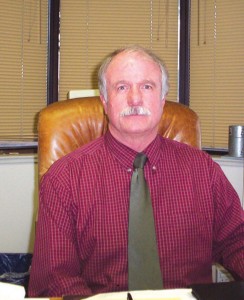By Geoff Flossic
Paying fees to file instrument flight rules or for calling a Flight Service Station may seem ridiculous, but in the near future that may be reality.
That was the main topic at the February meeting of the Centennial Airport Business Pilots Alliance, an organization that discusses issues critical to corporate flying. The organization meets at the Perfect Landing each month to discuss these issues.
Guest speaker Lisa Piccione, senior vice president, government affairs, National Business Aviation Association, told those in attendance that the NBAA opposes the user fees. The Federal Aviation Administration gets its money from the Aviation Trust Fund, made up of two sources. Those sources are the General Fund and the Airport and Airway Trust Fund, which is being dissolved in September 2007.
“Fifty-two percent of the trust fund revenue comes from the passenger ticket tax, which is assessed at 7.5 percent of the price of a domestic ticket,” said Bill Payne, president of CABPA and the Centennial Airport Business Association.
The trust fund is down significantly from what the projected funds were forecasted to be at this point. Airlines are trying to put the burden of the fees on the general aviation community, saying that GA, while using the same airspace, isn’t paying its fair share of fees, according to Payne.
“National Business Aviation Association member companies spend over $11 billion annually on commercial airline tickets, and combined with aviation fuel taxes member companies, contribute over $1.2 billion in taxes annually to the Aviation Trust Fund,” said Paul Smith, NBAA regional representative.
James May, president of the Air Transport Association, gave a speech addressed to the National Aeronautic Association on Jan. 27, 2006, in Washington D.C. In his speech, he called for the other segments of the aviation community to pay user fees. From 2001 to 2004, the balance in the fund dropped from $7.3 billion to $2.4 billion. It’s predicted that the balance in 2006 will drop to $1.2 billion. The FAA has said that their expenses will be greater than the revenue generated.
May said that in 2004, commercial flight operators paid about 90 percent in user taxes, but their total flight operations made up only two-thirds of all the flights that use the air traffic en route system. That means that commercial operators and their customers paid about $3 billion last year. He believes that other users of the system aren’t paying their share of the costs. May wants to see a fee imposed on users needing services the FAA provides, and help with the cost to provide those services. He also believes there should be a simple cost-based system for creating national air space system funding. He believes the fee shouldn’t apply to recreational GA pilots who fly out of non-controlled airports and who fly VFR.
Payne sees problems with this, one being that the government may not be able to run this efficiently.
“They would have to create a bureaucracy inside a bureaucracy to try and collect the money,” he said.
That would mean having to hire more people and would cost the government more money to enforce the fees. If the fees didn’t get paid, records and billing would have to be sent out to users who didn’t pay for their services. If still unpaid, that could lead to having their license pulled. Payne also believes that GA should pay its fair share, and a fair way to do it is through the use of fuel tax.
“If you don’t fly, you don’t pay,” he said.
NBAA, as well as other aviation groups, are opposed to user fees, believing the fees are a bad solution. They will continue to try to keep them from being imposed.
Also during the meeting, Larry Ulrich, senior VP of Rocky Mountain jetCenters, talked about the new Spectrum 33 and the first flight of the jet on Jan. 7, 2006. Spectrum Aeronautical, LLC is manufacturing the jet. Linden Blue, who owns Rocky Mountain jetCenters, founded Spectrum Aeronautical. In the 1980s, Blue oversaw the development of the Lear Fan and the Beech Starship. More recently, he’s been involved in development of unmanned aerial vehicles and nuclear reactors.
At a cost of $3.65 million, the Spectrum 33 is built using an exclusive carbon-graphite construction process. The aircraft is expected to have a cruise speed of 415 knots and a range of 2,000 nautical miles. With the lightweight composite materials being used on the plane, the fuel cost is expected to be about 71 cents per nautical mile.
Also discussed at the meeting, on the topic of very light jets, are how VLJs are going to create an extra load on the already crowded national air space system, and how the system needs to be modernized.
For more information on the proposed user fees, visit [http://www.nbaa.org] or call 202-783-9000.












